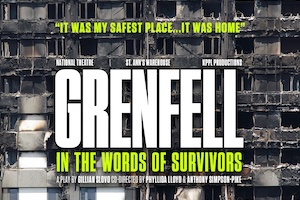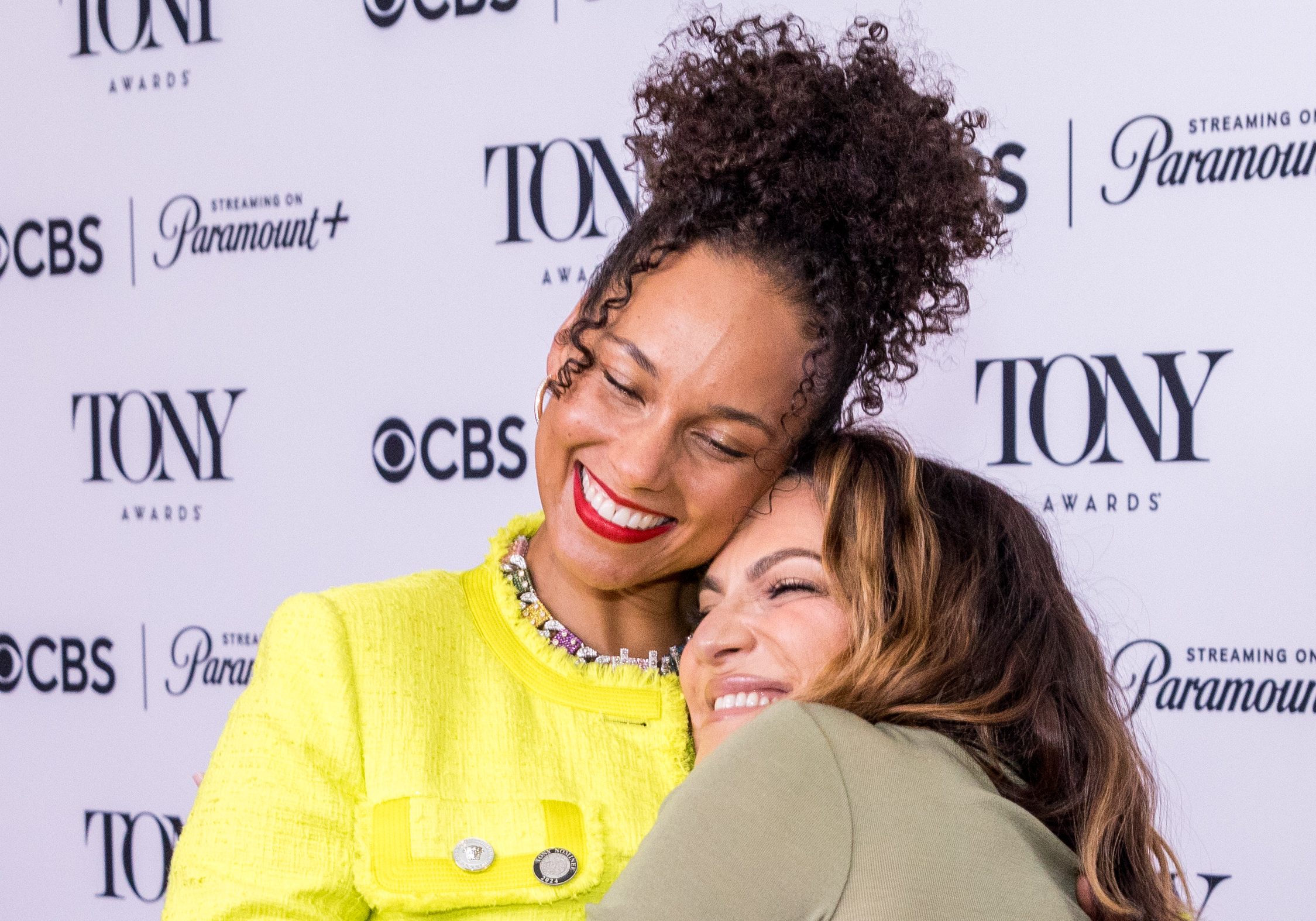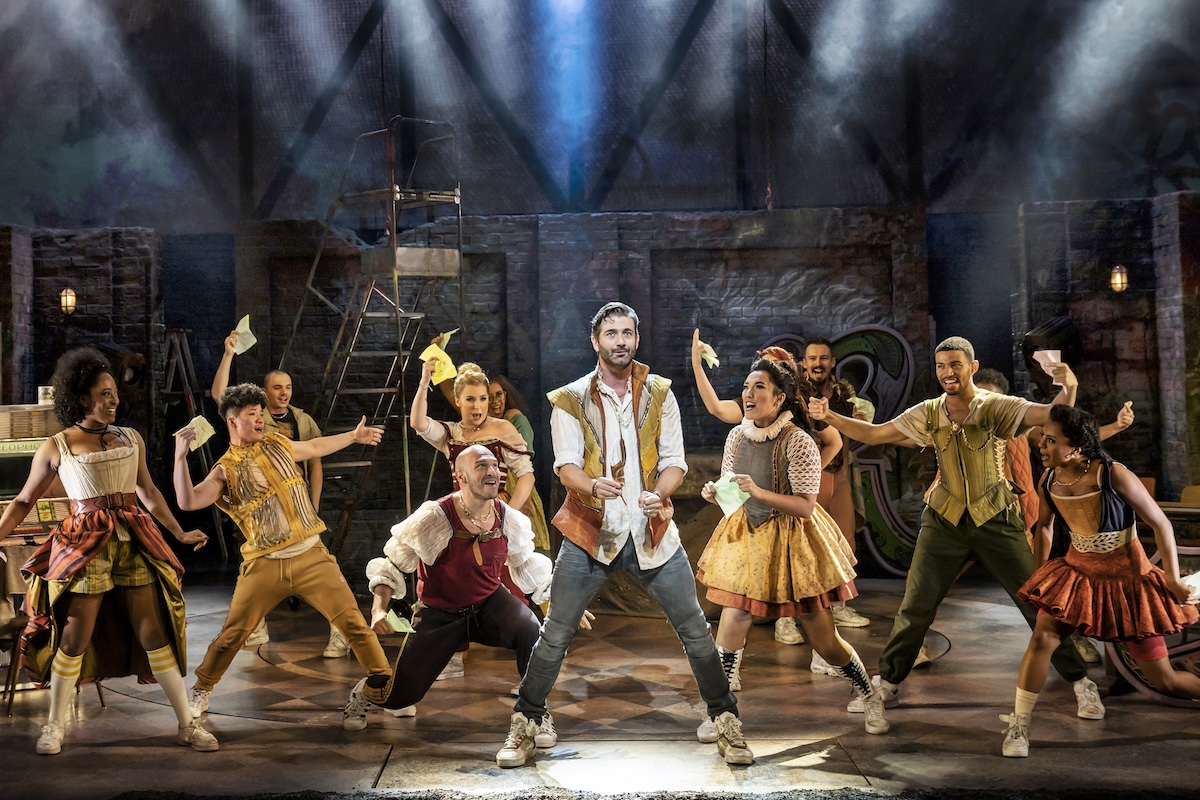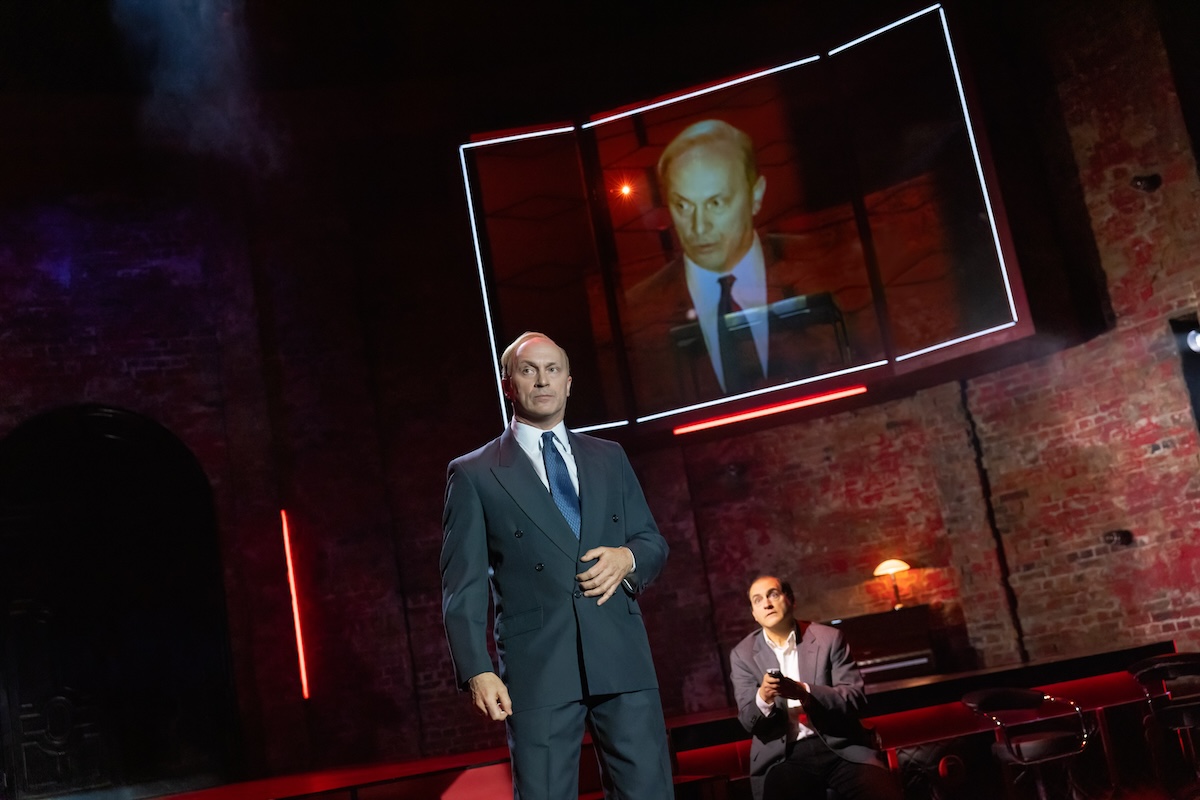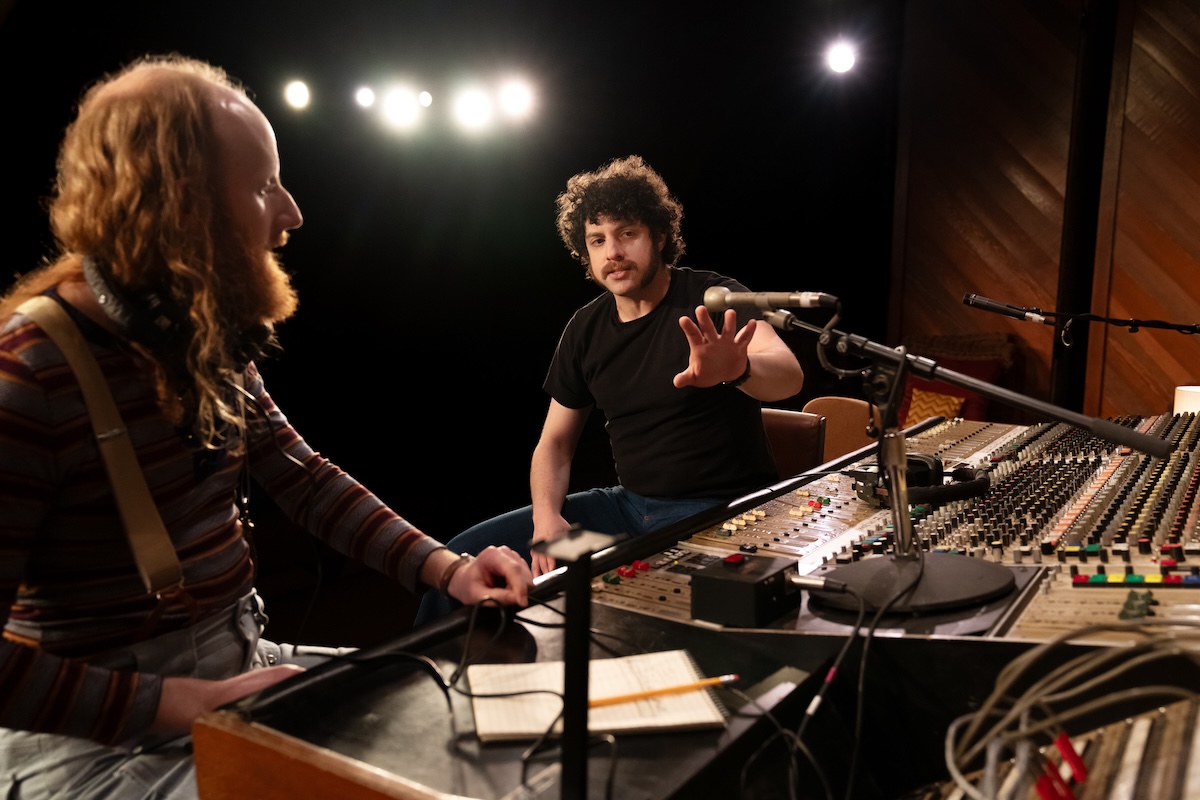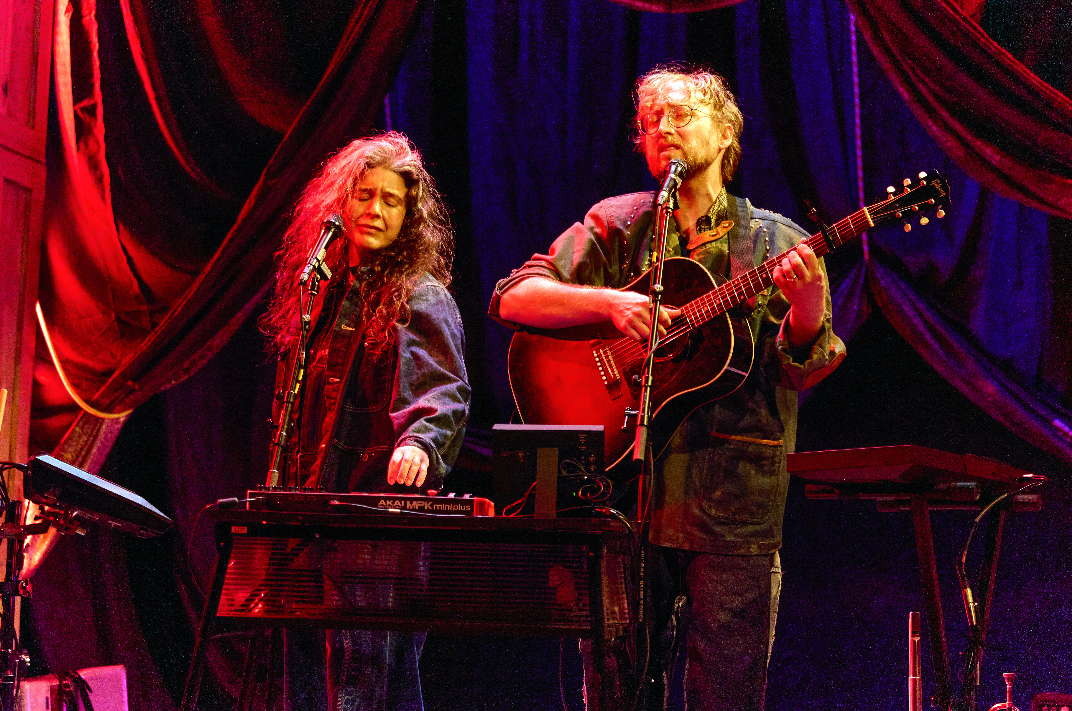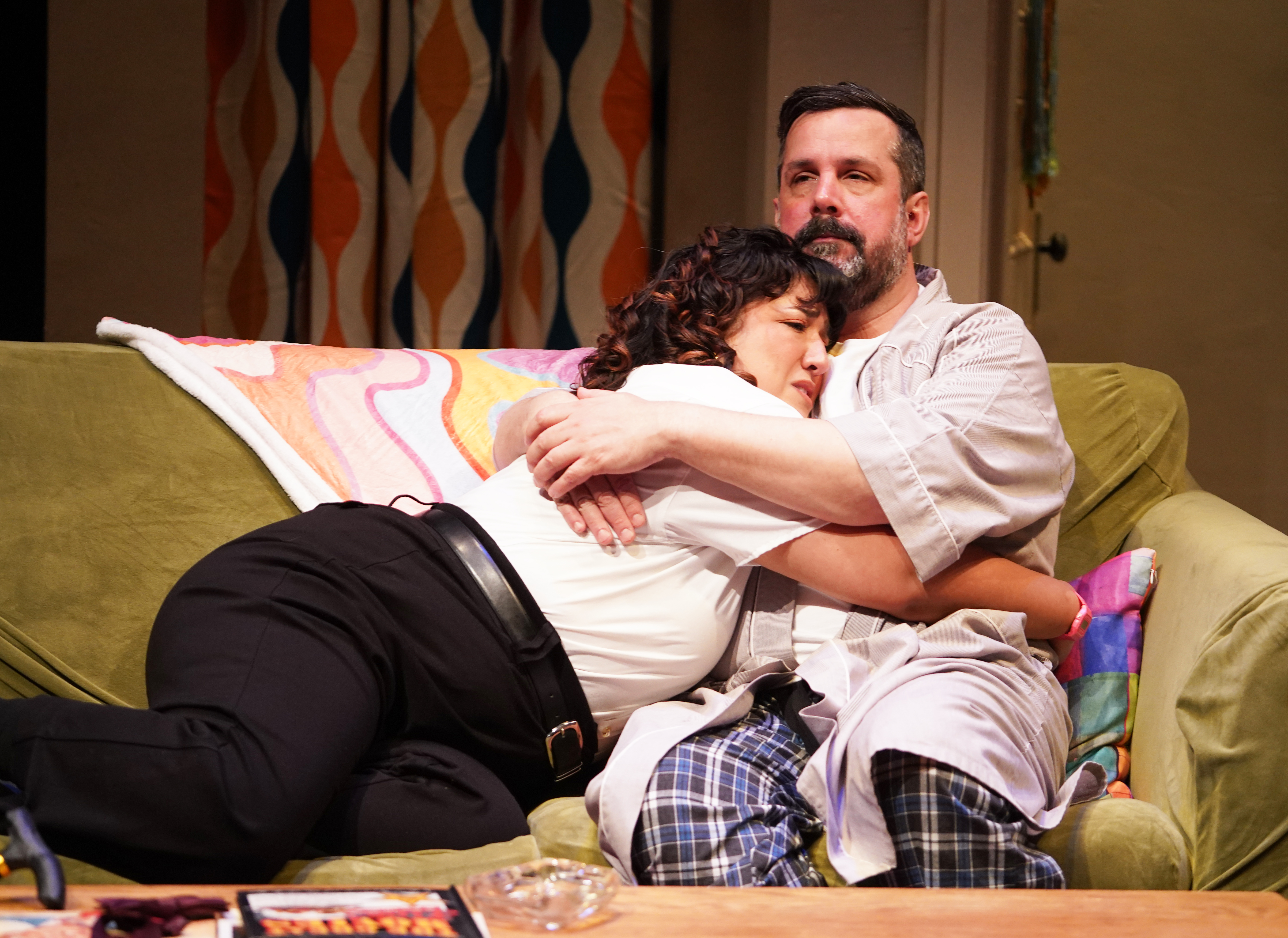Review: Grenfell Looks at the Failures That Led to a Deadly Fire in a London High-Rise
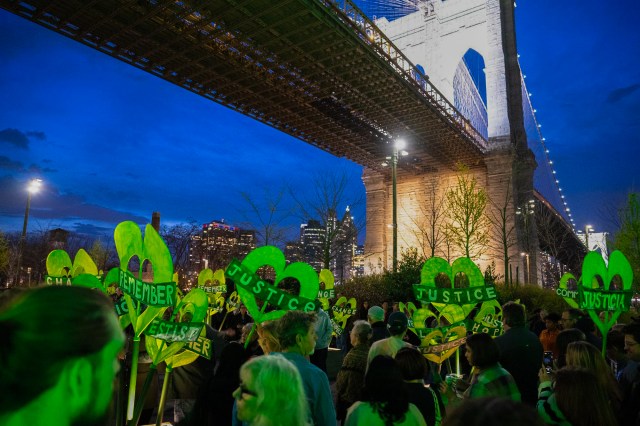
(© Teddy Wolff)
In June 2017, a fire broke out in a 24-story residential building in West London called Grenfell Tower. The fire started on the fourth floor and raged up the building’s exterior with extraordinary speed. By the time the flames were extinguished, 70 people had perished and two more would later die. It was the worst residential fire in London since the Blitz.
The Grenfell fire is the subject of Gillian Slovo’s engrossing and harrowing play Grenfell: In the Words of Survivors, now running at St. Ann’s Warehouse after transferring from London’s National Theatre. It’s a compelling work of verbatim theater (actual testimonies are used to narrate events) that even at three hours always feels urgent. Slovo and directors Phyllida Lloyd and Anthony Simpson-Pike bring survivors’ words to life with an ensemble of 11 actors who not only detail the terrifying escapes of their real-life counterparts but also fill us in on the litany of administrative failures and cheapskate construction decisions that made the inferno almost inevitable.
Built in the early 1970s, Grenfell Tower drew working-class families and individuals from diverse cultures to its reasonably attractive flats (Georgia Lowe’s costumes clue us in to the characters’ social and religious backgrounds). Slovo emphasizes the importance of community as the actors enter from each side of the theater (the production is staged in the round). They introduce themselves and give the names of residents they’ll be portraying, and then, tiresomely, ask the audience to turn to a neighbor and say hello. It’s one of the show’s unnecessary attempts to draw us into the play’s action and make us feel like we’re also a part of the Grenfell community, but it merely creates an awkward moment.
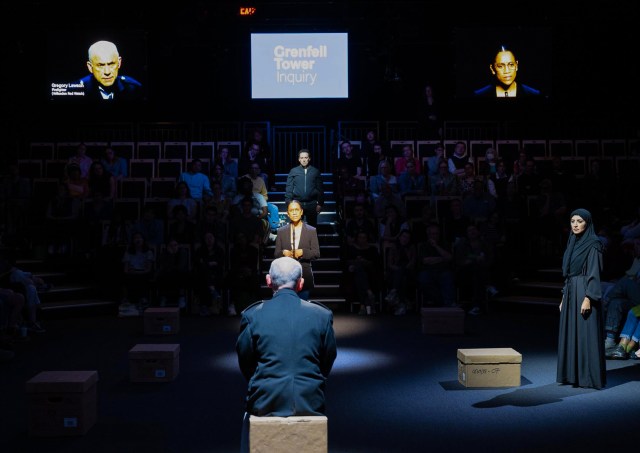
(© Teddy Wolff)
Fortunately, the directors keep audience participation to a minimum most of the time. The first act draws us into the everyday lives of the residents as we meet lifelong Grenfell tenant Rabia Yahya (Houda Echouafni) and her husband, Bellal (Rachid Sabitri), Italian immigrant Antonio (Joe Alessi), Portuguese whiz kid Tiago Alves (Keaton Guimarães-Tolley), Jamaican-descended Londoner Natasha Elcock (Dominique Tipper), and several others — all making up a tightly knit community happy to be living in relatively comfortable and affordable units.
Over the years, however, the building began falling into disrepair. Complaints went unanswered, and we understand why, given the management company’s apparent indifference to the many nonwhite, borderline-poor residents. Eventually, the edifice became an eyesore to owners of posh homes in the area, and an ill-fated decision was made to cover Grenfell’s exterior with a cheap, flammable cladding whose failure to pass basic fire-code standards and still be sold was made possible by David Cameron’s deregulation-friendly administration, an extension of the Thatcherite policies of the ’80s. When big-business greed trumps safety, tragedy is bound to follow.
And it did. The second act details the terrifying early-morning hours when tenants first detected smoke. Most remained in their apartments, having been instructed in a “stay put” policy for which the building’s concrete exterior had been designed. The new cladding, however, acted like a chimney flue and allowed the fire to sweep up the sides of the building in matter of minutes, filling the inside with black smoke in the process. We listen as disabled tenant Maher Khoudair (Gaz Choudhry) frantically tries to get his family to leave him behind as he struggles to make it down a smoke-filled stairwell and as others like Edward Daffarn (Michael Shaeffer) finally realize that staying put means certain death.
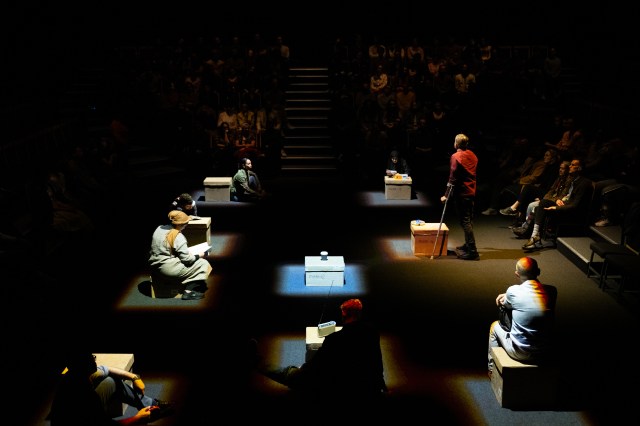
(© Teddy Wolff)
Lloyd and Simpson-Pike break up the tenants’ harrowing descriptions of their evacuations with perfunctory reenactments from the government’s official inquiry into the disaster (it is still ongoing) projected somewhat needlessly onto television screens positioned around the stage (video design by Akhila Krishnan). Here we see how the building’s preposterous way of identifying floors made it almost impossible for rescuers to ascertain where help was needed, and how calls for help to the control room were treated with racial bias. “This same operator spoke to my family and the response was different,” says Muslim teacher Hanan Wahabi (Mona Goodwin). “My brother had an accent, the other man didn’t.”
Televisions aside, the production does a lot with relatively little. Azusa Ono darkens the theater and creates claustrophobic spaces of light as people race down stairwells, which echo realistically with the actors’ voices (effective sound design by Donato Wharton). The only props are seven or eight storage boxes that the cast use as chairs and platforms throughout, only for us to learn later that the boxes symbolize what little remained of the tenants’ possessions.
In general, the ensemble keeps us engaged without standout performances. But Lloyd and Simpson-Pike add a final documentarylike flourish at the end that surprises, when an entire side of the audience comes down from their seats and sits in the stage area to watch a 10-minute filmed interview of the Grenfell tenants themselves on a large screen. It’s a moving coda (if a bit uncomfortable for those forced to sit on the floor), followed by another request to engage with the show as the audience leaves the theater with the actors in a protest procession calling for justice for the Grenfell dead. It’s another somewhat awkward moment. Still, as we exit and think about those who died, we’re also left wondering, Could it happen here?



